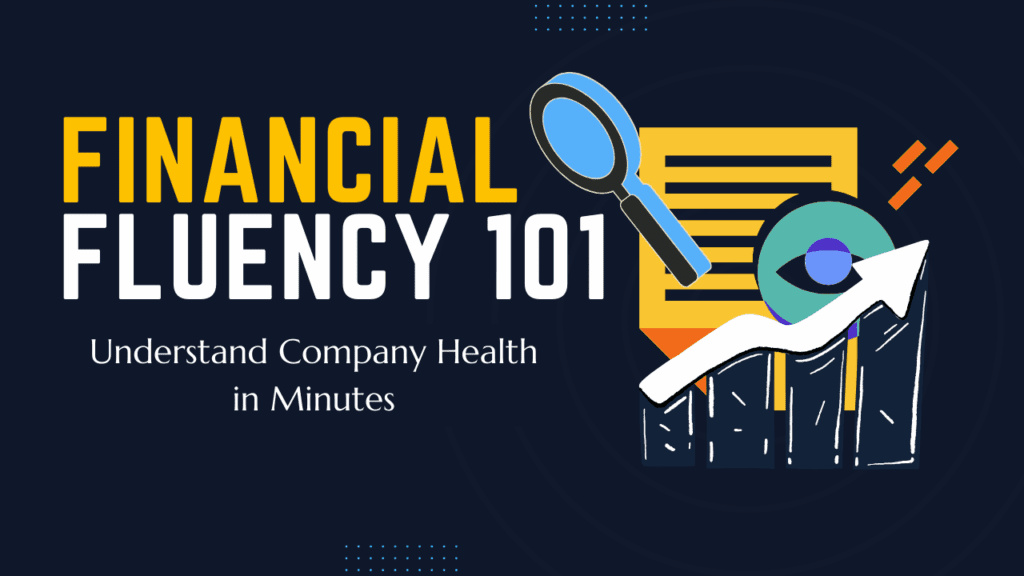🏁 Introduction: Why Financial Statements Matter
Financial statements are the language of business. They tell the story of a company’s financial performance, health, and growth potential. Whether you’re an investor scouting the next big stock, a business owner steering your venture, or simply curious about how companies operate, understanding these documents is a must-have skill. 💡
In this step-by-step guide, you’ll learn to break down the three major financial statements:
- 📊 Balance Sheets
- 📈 Income Statements
- 💸 Cash Flow Reports
By the end, you’ll know how to read them like a pro and make informed, data-driven decisions with confidence. Ready? Let’s dive in!
🧱 Module 1: What Are Financial Statements—and Why Should You Care?
📂 Lesson 1.1: The Big Three at a Glance
Key Questions:
- What are financial statements really saying?
- Who uses them—and for what?
Financial statements are structured snapshots of how a company earns, spends, saves, and borrows money. They’re used by:
- Investors to assess opportunities
- Managers to make decisions
- Regulators to ensure accountability
- Lenders to evaluate risk
The three most important financial statements are:
- Balance Sheet – Snapshot of what a company owns and owes at a moment in time
- Income Statement – Measures profitability over a period
- Cash Flow Statement – Tracks actual movement of money in and out
💬 Real-World Analogy:
Think of a business as a car:
- The balance sheet is the odometer (total value snapshot),
- The income statement shows speed (how fast it’s earning),
- The cash flow statement is the fuel gauge (can it keep running?).
🧠 Lesson 1.2: Foundational Tips for Reading Financials
Keep in mind:
- Start Big Picture: Spot trends before diving into details
- Time-Travel View: Look at multi-period data for changes
- Context is Key: Compare to competitors and industry benchmarks
- Avoid Hype: Let numbers speak—facts over FOMO
💡 Tip: Use platforms like Morningstar, Yahoo Finance, or SEC filings to access real data and practice reading actual statements.
📊 Module 2: Understanding the Balance Sheet
📘 Lesson 2.1: The Formula Behind It All
Formula:Assets = Liabilities + Equity
- Assets – What the company owns
- Liabilities – What the company owes
- Equity – What remains for the owners
🔍 Analogy:
Own a $400,000 home with a $250,000 mortgage? Your equity is $150,000. That’s the core logic of a balance sheet.
🏷️ Lesson 2.2: Key Components Broken Down
- Current Assets (cash, inventory, receivables)
- Non-Current Assets (property, equipment)
- Current Liabilities (debts due within 12 months)
- Non-Current Liabilities (long-term obligations)
- Equity (retained earnings, stockholder capital)
🧮 Example:
A company with $2M in current assets and $1M in current liabilities has a 2:1 current ratio—a good sign of liquidity.
📈 Module 3: Mastering the Income Statement
💰 Lesson 3.1: Profitability from Top to Bottom
Typical structure includes:
- Revenue (Sales)
- Cost of Goods Sold (COGS)
- Gross Profit
- Operating Expenses
- Net Income
🎯 Visual:
It’s a funnel—revenue flows in, expenses trickle out, and net income is what remains at the bottom.
📐 Lesson 3.2: Key Metrics to Track
- Gross Margin = (Gross Profit ÷ Revenue)
- Operating Margin = (Operating Income ÷ Revenue)
- Net Margin = (Net Income ÷ Revenue)
🧠 Real Example:
A SaaS company might have 85% gross margin, but its net margin may dip due to R&D and marketing costs—watch both!
💸 Module 4: Navigating the Cash Flow Statement
🔄 Lesson 4.1: The Flow of Real Money
3 Segments of Cash Flow:
- Operating Activities – Everyday business cash (revenues, bills)
- Investing Activities – Buying/selling long-term assets
- Financing Activities – Debt repayment, dividends, equity financing
Analogy:
Groceries = Operating.
Buying a fridge = Investing.
Borrowing for that fridge = Financing.
📊 Lesson 4.2: What Trends Reveal
- Positive Operating Cash Flow = Company is self-sustaining
- Free Cash Flow (FCF) = Cash left after expenses; key for expansion and dividends
🚩 Red Flag:
If net income is positive but cash flow is negative, dig deeper—there may be underlying issues.
🧠 Module 5: Putting It All Together
📏 Lesson 5.1: Use Ratios for Comparison
- Debt-to-Equity = Leverage
- Return on Equity (ROE) = Profitability per shareholder dollar
- Quick Ratio = Liquidity without inventory reliance
🔍 Benchmark:
Compare these numbers across industry peers for true performance insight.
⚠️ Lesson 5.2: Spot the Red Flags
Watch for:
- Shrinking revenues 📉
- Ballooning debt 💣
- Cash flow vs. income mismatches ⚠️
🧪 Case Study:
Enron’s financial “success” was a façade built on deceptive accounting—always look at cash flow and debt transparency.
🏁 Conclusion: Financial Clarity Is Power
Congrats—you’ve just completed a crash course in reading financial statements. 💼
Whether you’re building a business, investing in the market, or just want to demystify the money side of companies, this skill puts you ahead.
📊 Numbers don’t lie—if you know how to read them.
✅ Ready to Level Up Your Financial Skills?
Don’t stop at understanding—start analyzing with confidence.
📥 Download our FREE “Financial Statement Analysis Toolkit”
✔️ Easy-to-use templates
✔️ Real company examples
✔️ Cheat sheets for fast reference
🎯 Perfect for beginners, business owners, and aspiring investors.
👉 Access Your Free Guide Here





